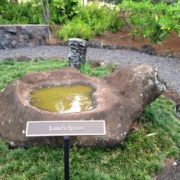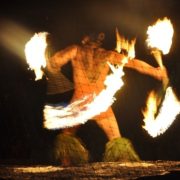A Garden Walk of Historical Artifacts on Kauai
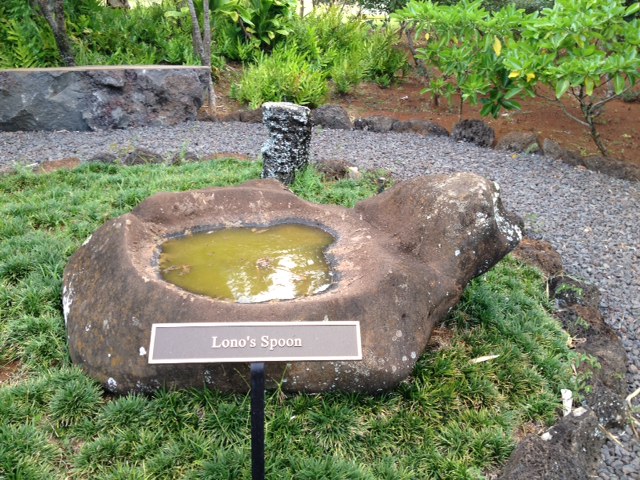
One of the many historical artifacts on display at Kukuiolono Park
If you have an interest in Hawaiian artifacts, a trip to the museum might be your plan, but what if you could take a leisurely walk through a garden of treasures without paying admission? In the quaint town of Kalaheo, you can do just this. Located strategically at the top of the hill in Kalaheo, overlooking the ocean, is the former estate of the late Walter McBryde also know as Kukui o Lono. The site itself has a lot of history.
Kukui o Lono translates to the torch of the god Lono and is originally the site of an ancient Hawaiian Heiau. The torch was a fire that was lit on the hill to safely guide fisherman and other canoes that were out at sea. The fire could be seen for miles.
It was here that McBryde built his estate in 1908. McBryde was the founder of the Kauai Fruit and land company and an advocator for the sugar planters. He is also known for establishing the first homesteading endeavor in Hawaii. He landscaped the acreage around his home and made it available for recreational use. The area was dedicated as park shortly thereafter. His estate was actually deeded in a trust and passed on to the people of Kauai to enjoy “regardless of race, color, or creed”.
When you enter the gates of the park, drive up the hill and park in the first lot that you see. To your left you will see a spectacular ocean view and the nine-hole golf course that is a favorite spot for the locals. To the right you will see the Japanese garden that was built by the Japanese workers. Between the two, you will see a small sign with the words, “Hawaiiana Exhibit”.
If you follow the short path to the top of the hill you are in for a treat. Here is one of the largest collections of large stones carved and collected by Hawaiians. Some are marked and some are not. There are many tales about the rocks in this collection, some of which make perfect sense. Other explanations of the stones are little more obscure since their origin is uncertain.
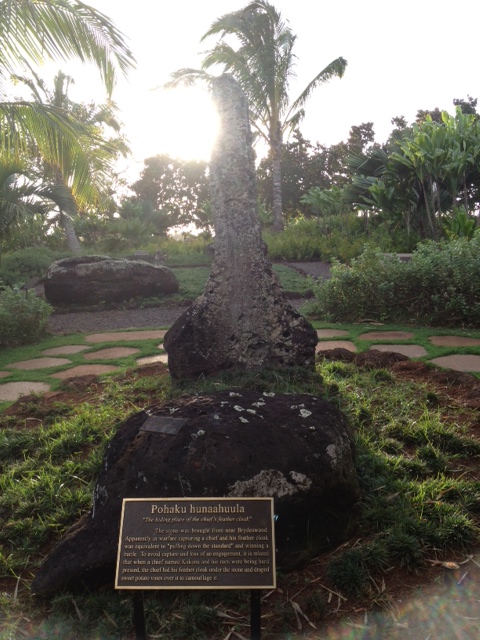
Pohaku hunaahuula
The bronze plaque reads, “Pohaku hunaahuula, The hiding place of the chief’s feather cloak. The stone was brought from Brydeswood. Apparently in a warfare capturing a chief and his feather cloak was equivalent to ‘pulling down the standard’ and winning a battle. To avoid capture and loss of an engagement, it is related that when a chief named Kukona and his men were being hard pressed, the chief hid his feather cloak under the stone and draped sweet potato vines over it to camouflage it.” The tall stone behind this one is the Pohaku loa (translated tall stone, where prayers to the fishing god were offered).
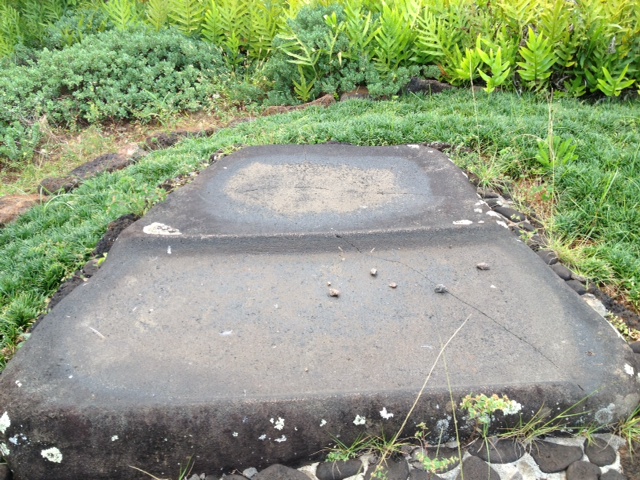
Hawaiian Salt Making Stone
A large rock with a flat surface and center divider was used by the Hawaiians to make salt. You will also see rocks in this collections with tree molds in them that are similar to ones found on the Big Island. They were formed when the lava poured onto the trees millions of years ago. Another interesting artifact that you will see is the fishing stone. This stone was apparently used by fisherman to store their fingerlings for the night to keep the catch alive. The next day they would be moved to the mountains for replenishing the stock in a nearby stream. The rounded stone that you will see is called a game stone and was used by the Hawaiians for bowling type games.
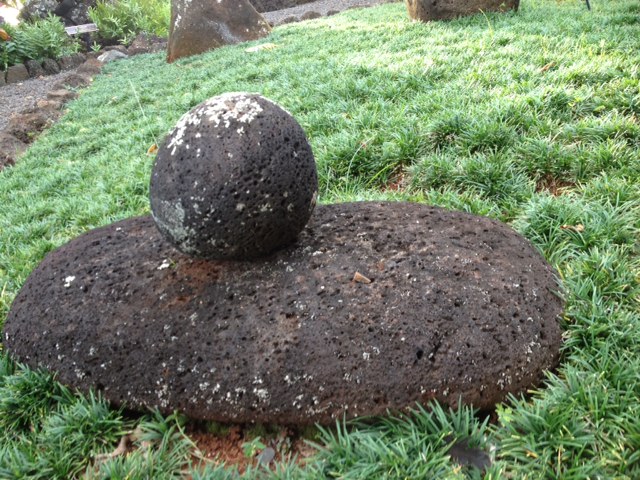
Hawaiian Stone Game
There is a very unique stone here that was found by a Hawaiian family and it is called Kauai Iki. It is a stone that is shaped like the island of Kauai. When describing this stone, the author of The Story of Koloa posed an interesting question: How would the family know what the island was shaped like if they had not seen the island from the air, nor from a map? Nevertheless, the rock is shaped like the island of Kauai.
Take time to enjoy the entire park. There are walking paths that take you through an ironwood forest, another that takes you out to the pavilion where the original “torch” was lit. If you are lucky enough to be visiting during whale season, it is likely that you will see the spouts and other characteristic behaviors of the Humpback Whales from this vantage point. Look around and you may see a whaler’s try pot where whale blubber was boiled into oil. From here you can enjoy the walk back to the parking lot. Before leaving, make sure to take the time to walk the recently renovated Japanese Gardens.
For more info about Kukui o Lono Park, check out Kauai.com. For more information about the history of Koloa, Kalaheo, Lawai and the South Shore of Kauai, check out the reference used in this article written by Donald Donahue, entitled, The Story of Koloa, A Kauai Plantation Town.

